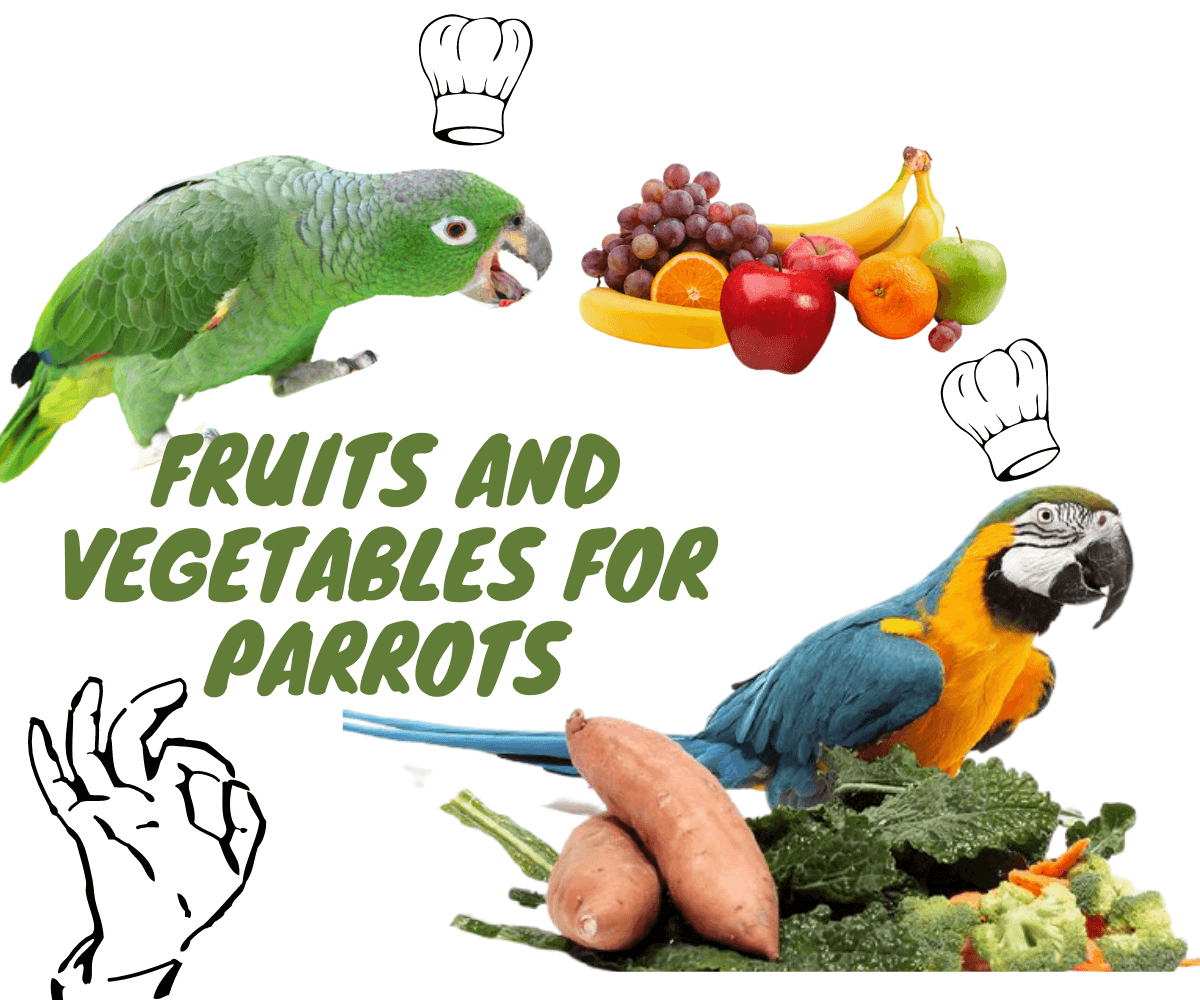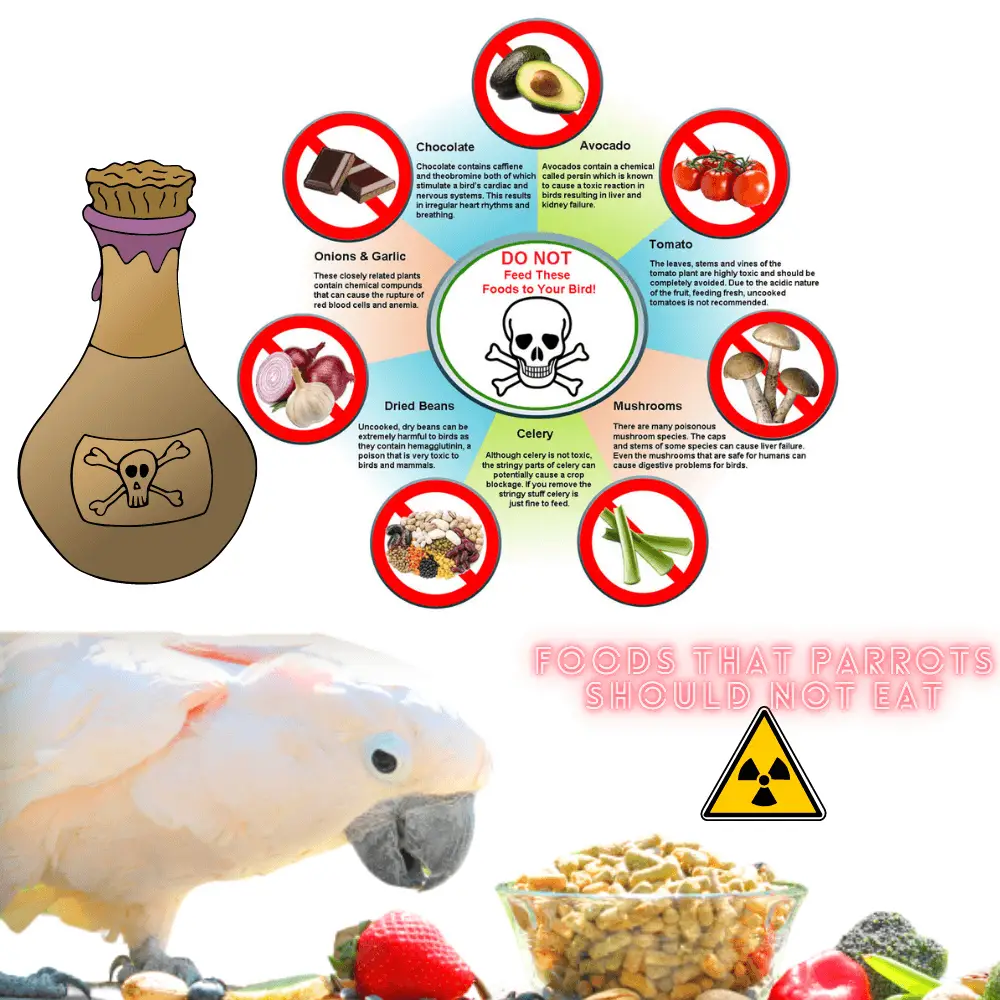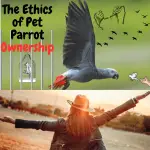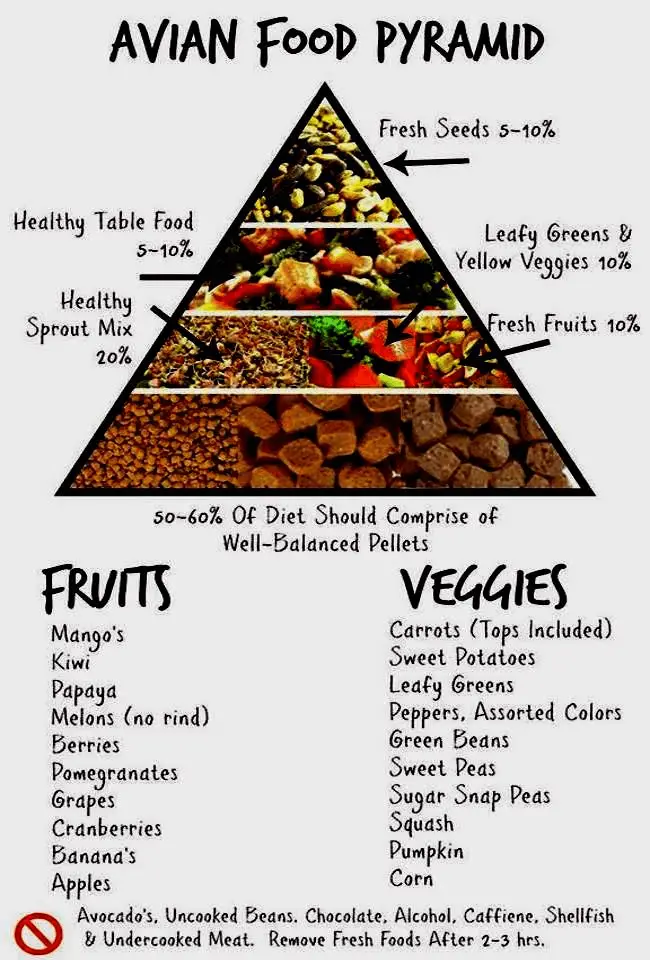
Food for Parakeets: The Parakeets are relatively easy to feed. They are curious birds that are usually willing to try most of the treats you present to them. Most owners prefer to buy seeds already mixed in pet stores; However, a seed-based diet is not enough to provide a budgie with all the essential nutrients it needs.
The good news is that the rest of the nutrients your budgie needs are already in the simple foods in your home.
Types of seeds
There are a variety of budgie seed blends for sale at local pet stores, and usually one is no better than the other. Seeds tend to be low in certain amino acids, vitamins, and minerals that budgies need. That is why a purely seed-based diet is not recommended, as it can deprive the budgie of nutrients.
In addition, budgies that live sedentarily and are only placed on a diet of seeds may have excessive fat deposits, which can have the same consequences on the bird as on humans. Indeed, the seeds are relatively rich in fat and for an inactive bird, this is bad news. Do not buy seeds that are not labeled “budgie” or “small/medium birds”. For example, seeds that can be placed in an outdoor bird feeder for wild birds will have an even higher concentration of fat than budgie seeds because wild birds use a lot of energy just by flying. You should not give this type of seed to a less active budgie.
Below are some common types of seeds that are found in budgie mixes or that can be purchased and mixed separately:
- Safflower: ideal for any small parrot
- Groats: ideal for any small parrot
- White sunflower: given in moderation
- Striped sunflower: common in many small/medium parrot mixtures
- Canary seeds: also suitable for budgies
- Millet spray: a favorite treat for budgies
Pellets
The pellets are designed to mimic the seeds and are often mixed in seed diets to provide the nutrients that the seed alone does not provide. They can contain several vitamins and minerals that the bird needs, which is great!
The bad news is that budgies who are not trained to accept this type of food will usually not eat it, even if it is mixed with the seed and the function of the pellets is lost. Watch your budgie if you can, to see if she eats the pellets or if she just drops them on the cage floor, as is most often the case.
The best way to incorporate pellets into a budgie’s diet is to do it gradually. Most budgies will reject pellets entirely if they abruptly switch from a seed-based diet to a pellet-based diet. You can stop at 3 weeks and give your budgie a diet of half seeds and half granules that will still bring him variety but with the added benefits of pellets.
If your budgie needs a stricter diet (e.g., budgies bred for shows), continue until week 6 until the budgie is on a dumpling diet only.

Introducing pellets into the diet of a budgie
5 parts of seeds 1 part of the coating
4 parts of seeds 2 parts of pellets
half-seed/half-pellet
2 parts of seeds 4 parts of pellets
1 part seed 5 parts coating
Use only granules
Fruits and vegetables
Fruits and vegetables provide natural vitamins and minerals to the budgie and also provide the bird with a variety of possibilities. Berries such as strawberries and blueberries are very rich in antioxidants and as soon as a budgie tastes the juice of the fruit, it begins to eat the fruit itself.
Note: Do not feed birds with avocados! They contain persin, a chemical that is toxic and deadly to birds.
Vegetables can be as appetizing as fruits and can (and should) be served with other leafy greens like lettuce (avoid iceberg lettuce as it is low in nutrients). Green cabbage or spinach is good to add to a vegetable mixture.
However, fruits should not be served to a budgie every day as they have a higher sugar content than vegetables. 2 to 3 times a week. Vegetables, on the other hand, can be given daily at the same time as the usual seed diet of the bird. You should know that the droppings of a budgie become more watery when given fruits or vegetables, but do not confuse this with diarrhea.
They should be offered often (daily, if possible) at the same time as the normal mixture of seeds and pellets.
Fruit for a parrot
- Banana – rich in potassium
- Grapefruit – rich in vitamin A
- Mango – rich in vitamin A
- Apricot
- Watermelon
- Fishing
- Apple
- Grapes
- Orange – all citrus fruits are rich in vitamin C
- Blueberry – rich in antioxidants, can stain feces
- Blackberry – rich in antioxidants, can stain feces
- Papaya – rich in vitamin A
- Cantaloupe – rich in vitamin A
- Strawberry – rich in antioxidants, consume in moderation
- Passion fruit
- Cherry/Cherry – may stain feces red, but this is normal
This list is not complete, but it contains the most common fruits that can be found in the house. In general, all fruits are safe for budgies when given in moderation, with the exception of avocado.
Also remember that if a budgie refuses food once, it does not mean that she will always refuse it. Try to present the food in a different form next time. Chop it more finely or mix it with seeds and other fruits at once.

Vegetables for a budgie
- Tomato – rich in vitamin A
- Cucumber
- Carrot – very rich in vitamin A
- Parsley – yield in moderation
- Kale
- Spinach – is rich in antioxidants
- Broccoli – rich in potassium
- Cabbage
- Peas – rich in potassium
- Chili peppers – see footnote*
- Squash
- Beans – such as beans, lima, soybeans, chickpeas, lentils
- Zucchini
- Lettuce – do not give iceberg lettuce, only dark greens
- Asparagus
- Beans – break the pod halfway and let your budgies pick them
Just like the list of fruits, this list is not complete, but they are more common vegetables. Do not give budgies vegetables from a tin can, these are often devoid of nutrients and contain preservatives and additives in juices that can be harmful to a bird.
One way to introduce vegetables into a budgie is to cook them in Steam or boiling water. For example, carrots can be boiled and cut into small pieces. They can be garnished with green leaves and a little millet spray to encourage birds to pick them.
What nuts can budgies eat?
Parakeets can eat several types of nuts. They are nutritious but also rich in fat, so be sure to give them in moderation; Two to three times a week is enough. Remember never to give your budgie slate nuts or other flavored nuts, and avoid “party-mix” varieties that are almost always roasted and salty.
Nuts adapted to budgies
- Almond – avoid the roasted variety
- Cashews
- Hazelnut
- Nut
- Pecan
- Macadamia
- Peanuts – remove them from their shell first, or wash and inspect the shell to make sure there is no mold
- Pistachios – as with peanuts, if they are in their shell, wash and inspect the shell first
If you find that your budgies are not eating nuts as is, you can crush some of them and mix them with their usual pellet/seed diet. If you cut all their fruits and vegetables into pieces, you can also add chopped nuts to the mixture.
Other types of treatments
Treats for budgies can be purchased in any pet store and even in most large commercial stores. Your budgie will likely appreciate store-bought treats and will be more willing to accept seed-based treats rather than a healthier fruit or vegetable alternative. That is why treats should be given in moderation. As with any balanced diet, snacks should only be a small portion. You can also use the treats as a reward if you’re trying to train your budgie. Here you can find more information on how to easily train your budgie: Training on a budgie’s finger.
Grass seeds make a natural and tasty treat when there is nothing else around.
Treats and snacks for a budgie
- millet spraying – can be fattening, do not give more than 2 inches per day
- Flavored seed sticks – sold in most pet stores
- Cuttlefish bone – (also, cuttlefish bone) a natural block of calcium, helps trim a bird’s beak
- Mineral block – a source of minerals that also helps trim a bird’s beak
- Grass seeds – you can find them in any flower field or even in your garden. They can be given away often
- Oats – you can grow your own!
A healthy mix for all birds
Toxic foods to avoid in a budgie diet

Some foods that are safe for humans are harmful to budgies. Be careful NOT to feed your budgie any of the following foods this is a toxic food for parakeets and parrots
- Lawyer
- Onions and garlic (harm their red blood cells)
- Tomato leaves
- Rhubarb or potato plants (contain solanine which is deadly)
- Caffeinated foods: coffee, tea, chocolate
Some common domestic plants are known to be toxic to budgies:
- Azalea
- Poinsettia
- Parsley
- Lily
- Tulip
- English Ivy
- Daffodil
Installation of a birdcage
- How to install a bird cage for a budgie or cockatiel… This method of installation is quick, easy, and foolproof for any bird. Make your birds feel at home with a quick and easy tutorial on how to set up a cage for budgies, cockatiels, or other small birds.
Budgie Food – Budgie diet for proper care
SOURCE: Alen AxP





















